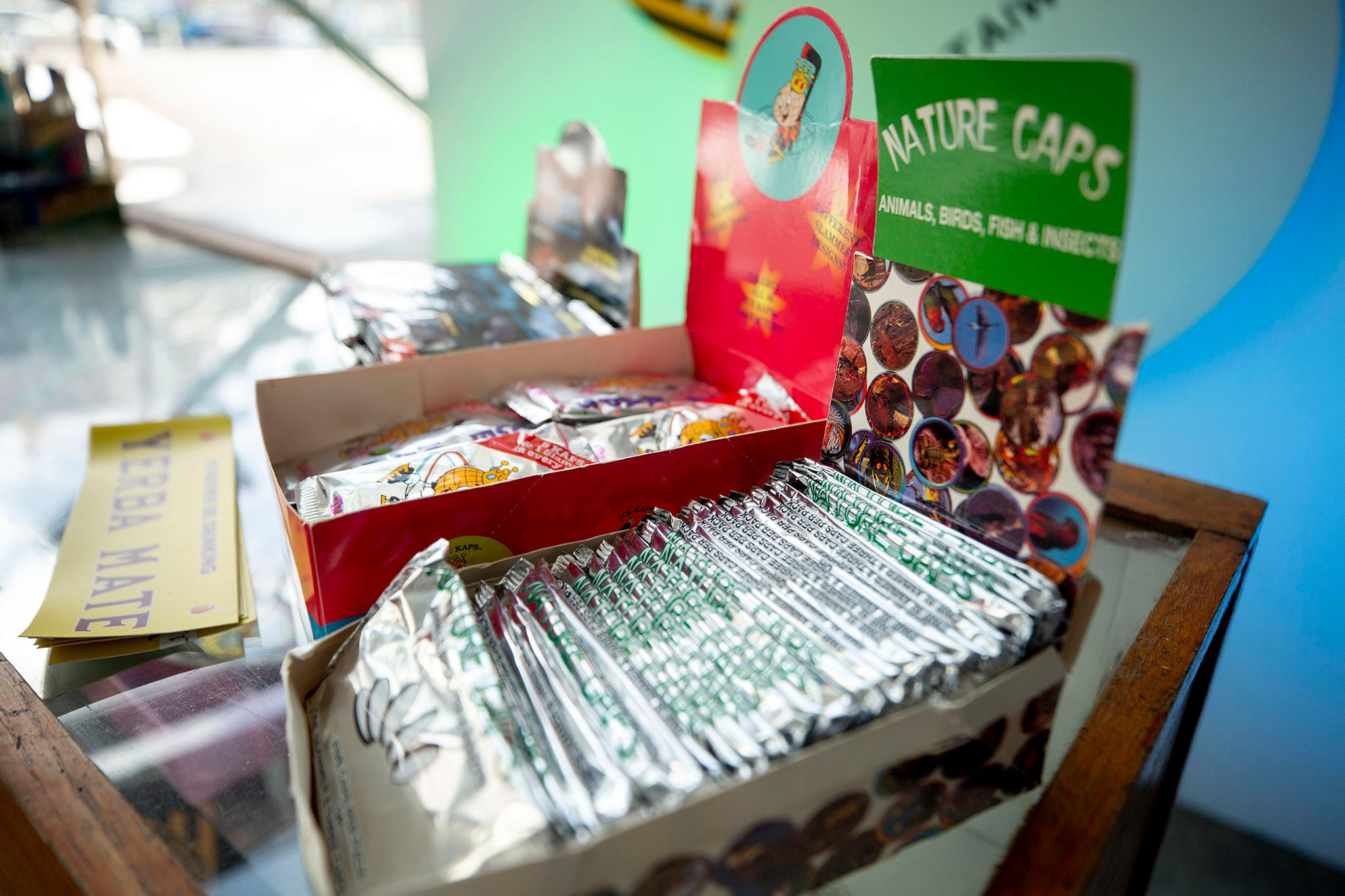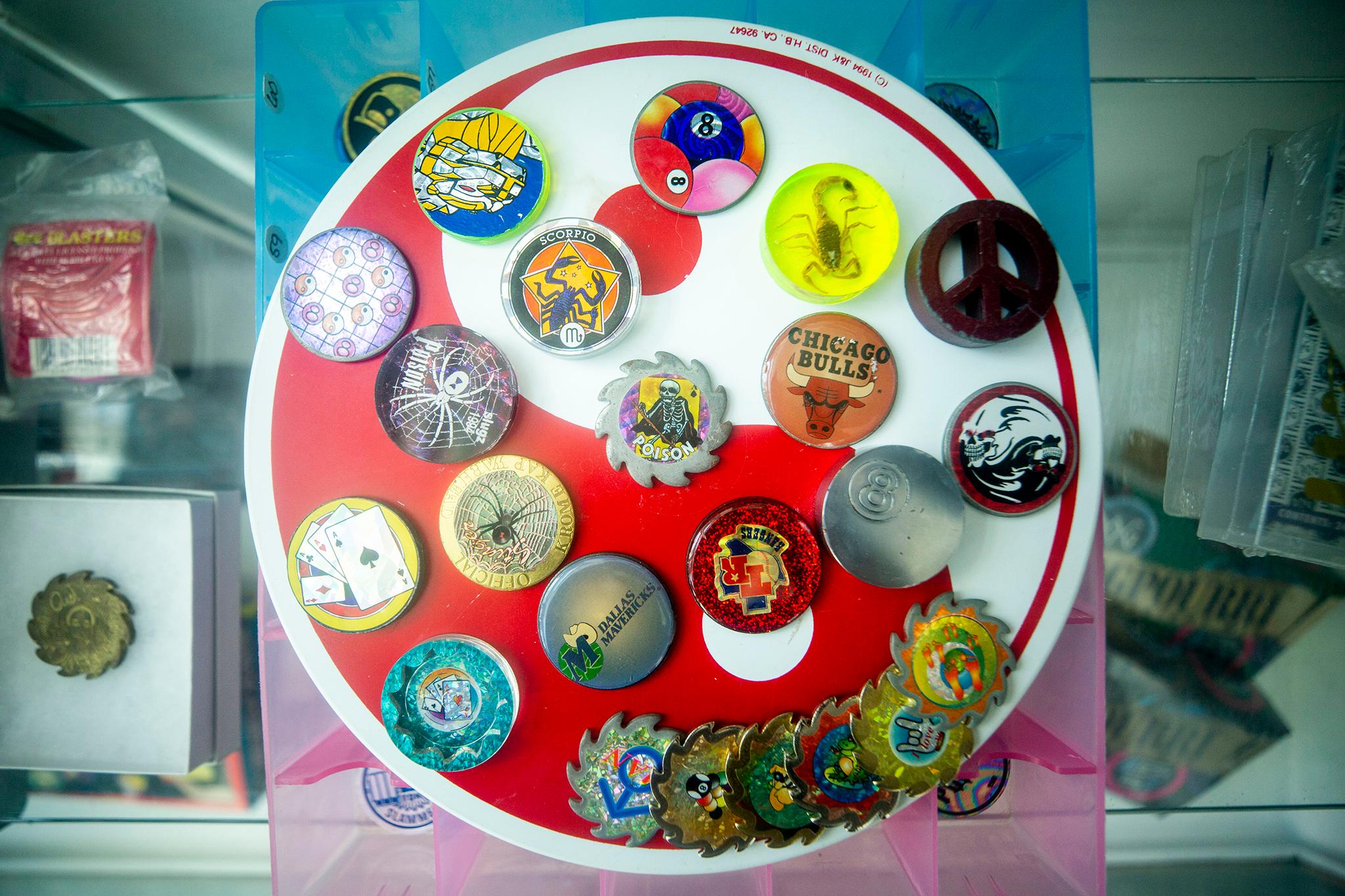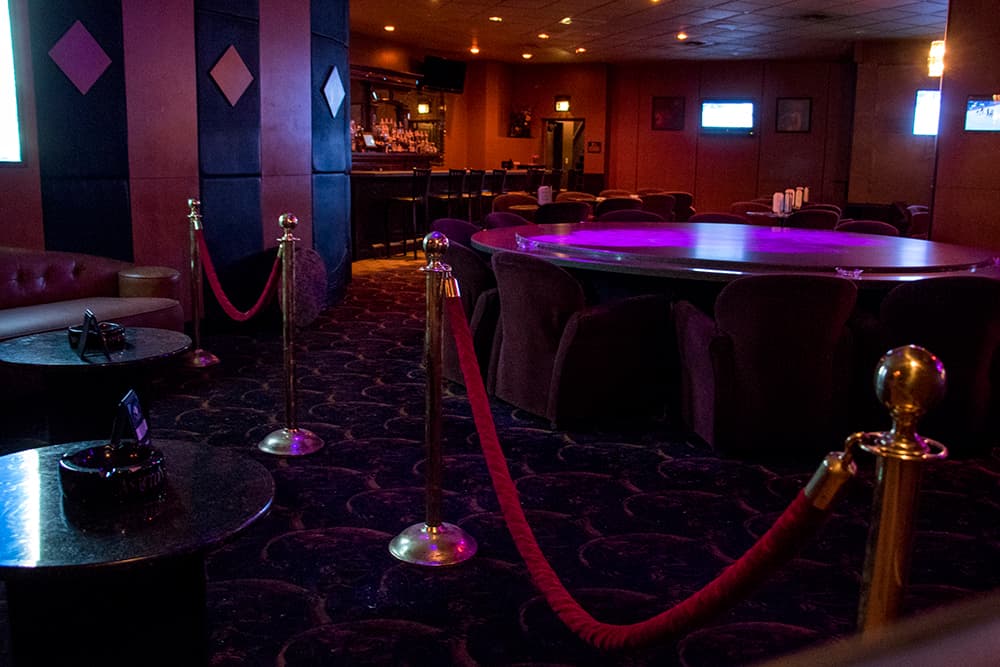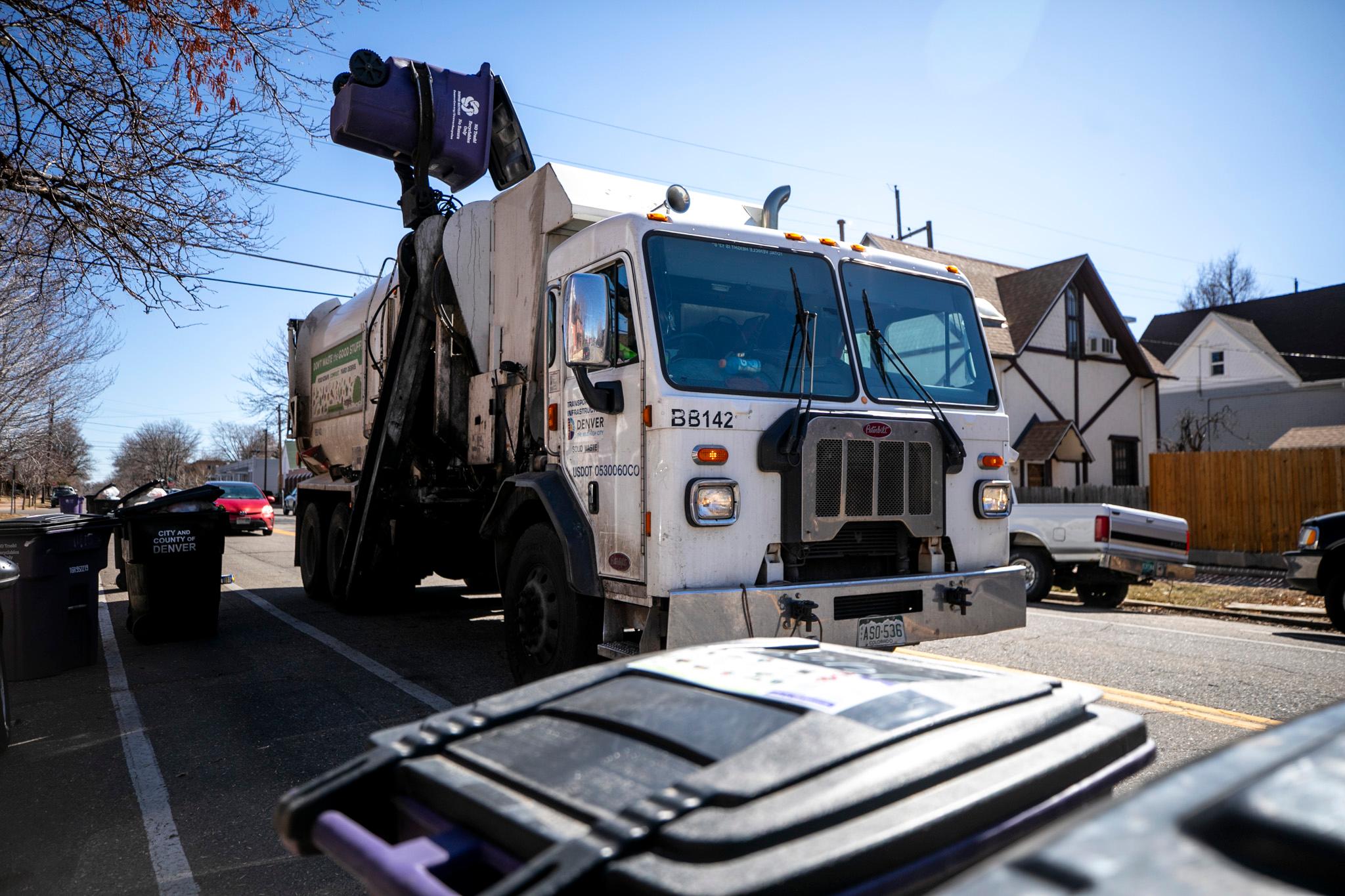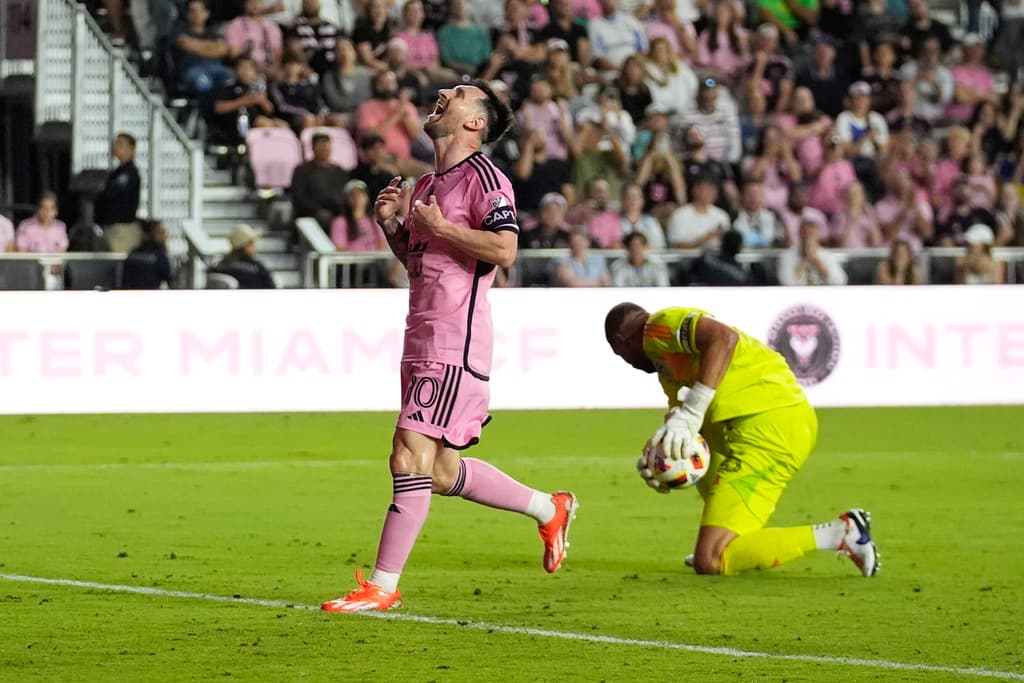Zach Reini has been thinking about pogs for a while.
Yes, pogs, which likely either mean nothing or everything to you, depending on whether you grew up in the nineties.
If you didn't grow up in the nineties, here's an explainer. Pogs were a short-lived fad based on a Hawaiian game built around cardboard bottle caps. The commercialized version, and the one most people will remember, involved stacking little cardboard disks (pogs) typically decorated with loud, colorful designs. Players would take turns slamming down on the stacks with metal disks called "slammers," trying to score as many pogs as they could. Some kids just collected them, trading them like currency and keeping them in binders, much as they would Pokémon or baseball cards.
"It's like this visual vernacular that you had to be there to understand," Reini said. "And it just kind of captured the essence of the '90s pretty well."
Reini was born in 1990, so he caught the tail end of the "pogs craze." He vividly remembers keeping his pogs in a lime green storage tube with a white cap, decorated with an image of a chess board he drew himself using his dad's sharpie. He also had a half inch-thick metal slammer. It was so heavy that his best friend and next door neighbor hated playing with Reini because when he used that slammer, he'd always win all of the pogs.
The craze soon died down, and it wasn't long before Reini's green storage tube was sitting in the back of his closet. He moved on to Pokémon cards. "Actually, it probably went: Pogs, Space Jam, then Pokémon," he said.
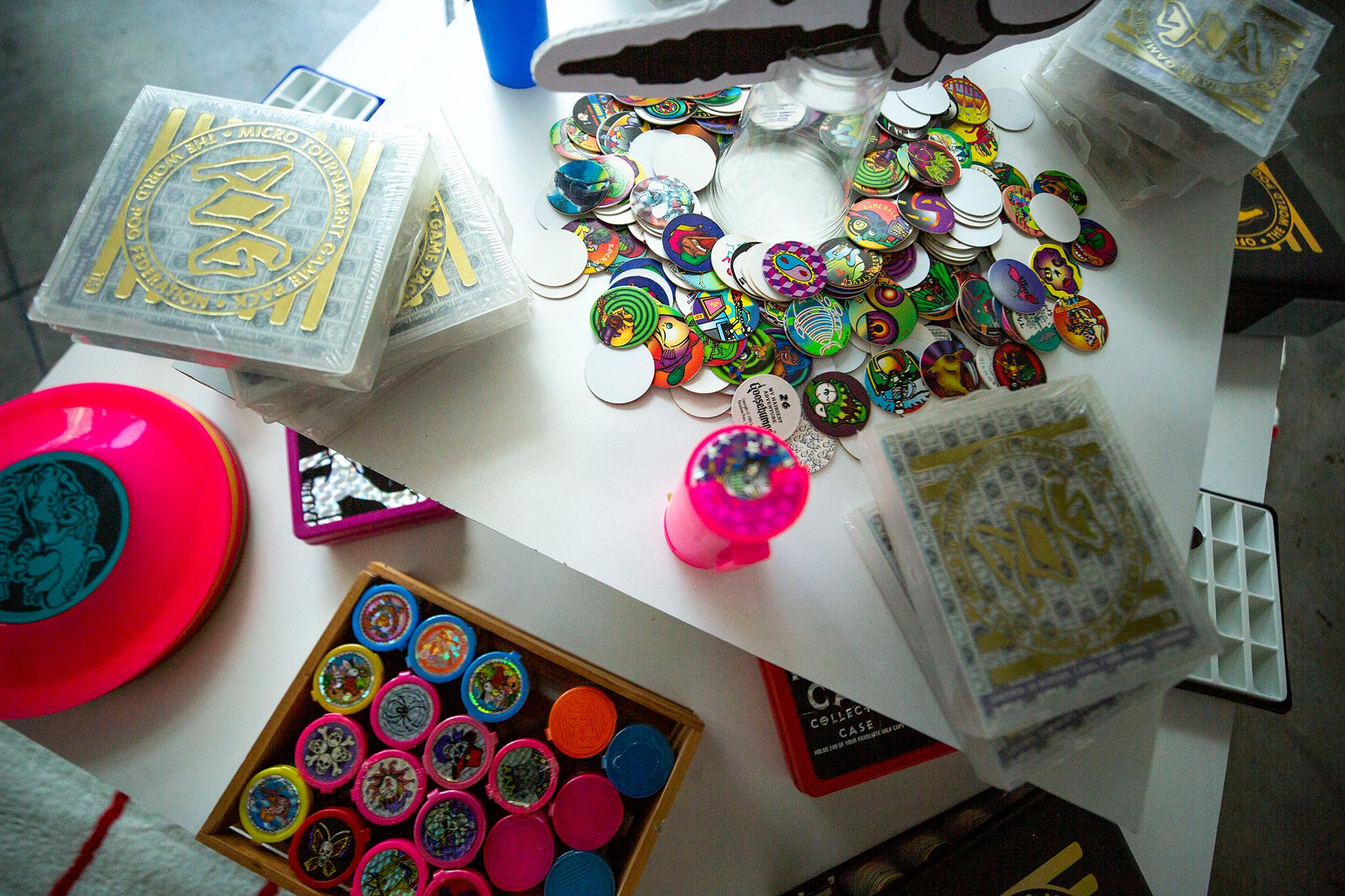
Pogs disappeared from the public sphere, and seemingly from people's minds, even though they held meaning for Reini and others who grew up around the time he did. Decades later, in the mid 2010s, the artist and Denver native was interested in exploring pop culture through his paintings. He wanted to engage with something more personal than, say, Looney-Tunes or Mickey Mouse, something that hadn't been dealt with in pop art before. He asked himself what had personal significance to him, and to other people, but that, if you'd missed the moment, you might not understand?
The answer was pogs.
"It's like this weird, half hive mind, half idiosyncratic thing that I wanted to tap into," he said. "And after looking at all the designs on them, there's really an endless resource to make paintings from."
Around 2016, he made his first pog painting using a three-foot wide circular canvas.
"The idea behind them was just to make, like, the ideal pog," he said, "and replicate this really s***** design in a nice form, and really make it well -- like, high craftsmanship."
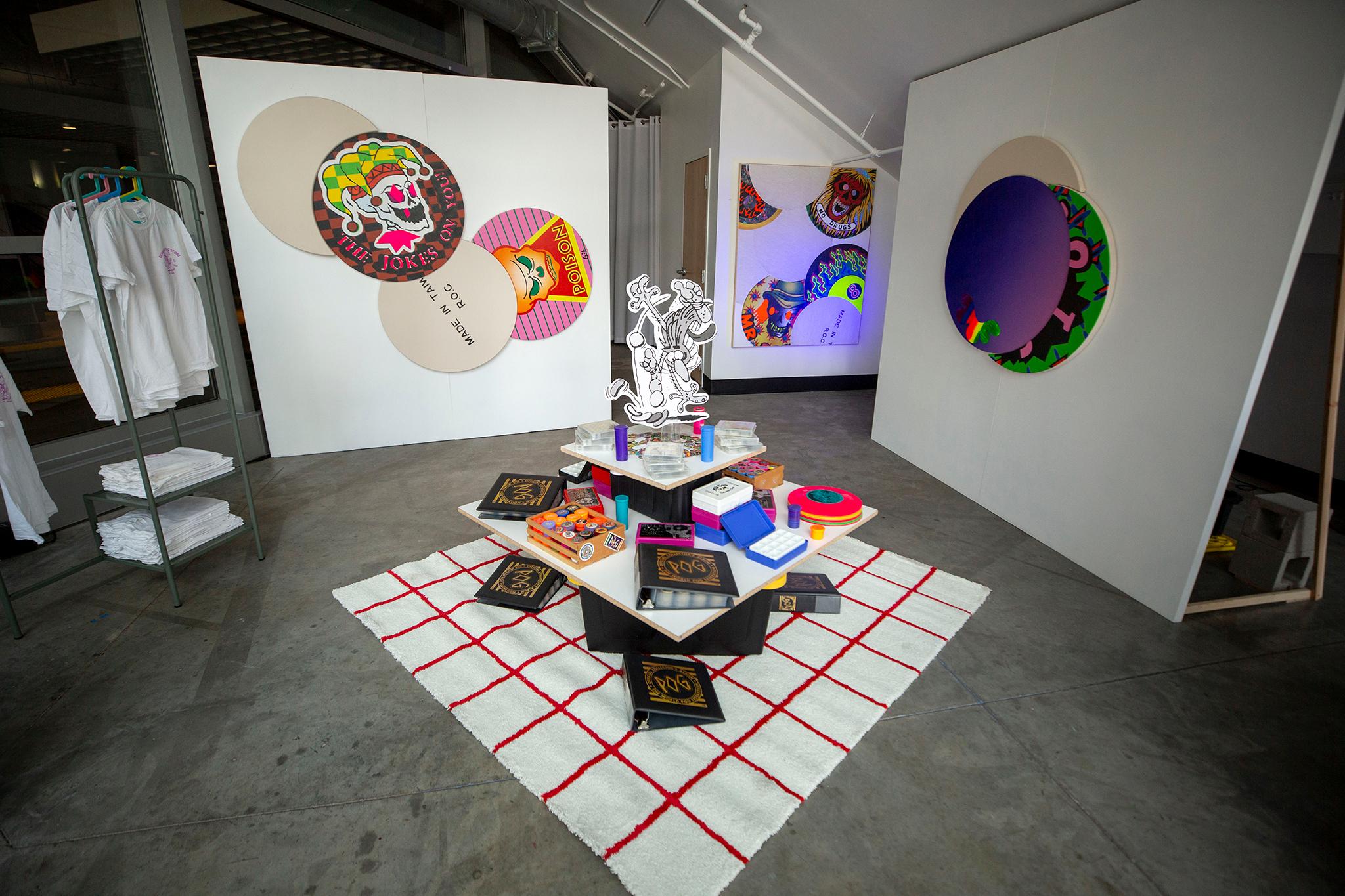
What is a quintessential pog?
"It's just total design anarchy," Reini said. "There's no rules. Just make it loud, make it quick, and, like, let's get these out. Like, let's go!"
Classic pog imagery included things like skulls, yin-yangs, magic eight balls, poison, football players.
"I would say the quintessential pog is just like a skull with bright colors that make no sense, with a totally irrelevant background that's equally as loud," Reini said.
Reini was showing his pog paintings in the David B Smith Gallery when he stumbled across an eBay listing for an enormous pog archive, enough pogs to fill a whole store. There were thousands of them, some of them still in their original, unopened packaging -- Star Trek, nature-themed, you name it -- that had survived 30 years in somebody's basement.
Reini said it's natural to hold onto something nostalgic, something like Beanie Babies and Pokémon cards that were once trendy and gained value over time, even selling for thousands of dollars. Pogs are not rare by any means, Reini said. Millions were made.
"But the fact that in the archive there's sealed stuff, that's what makes it rare. That adds to its value," he said.
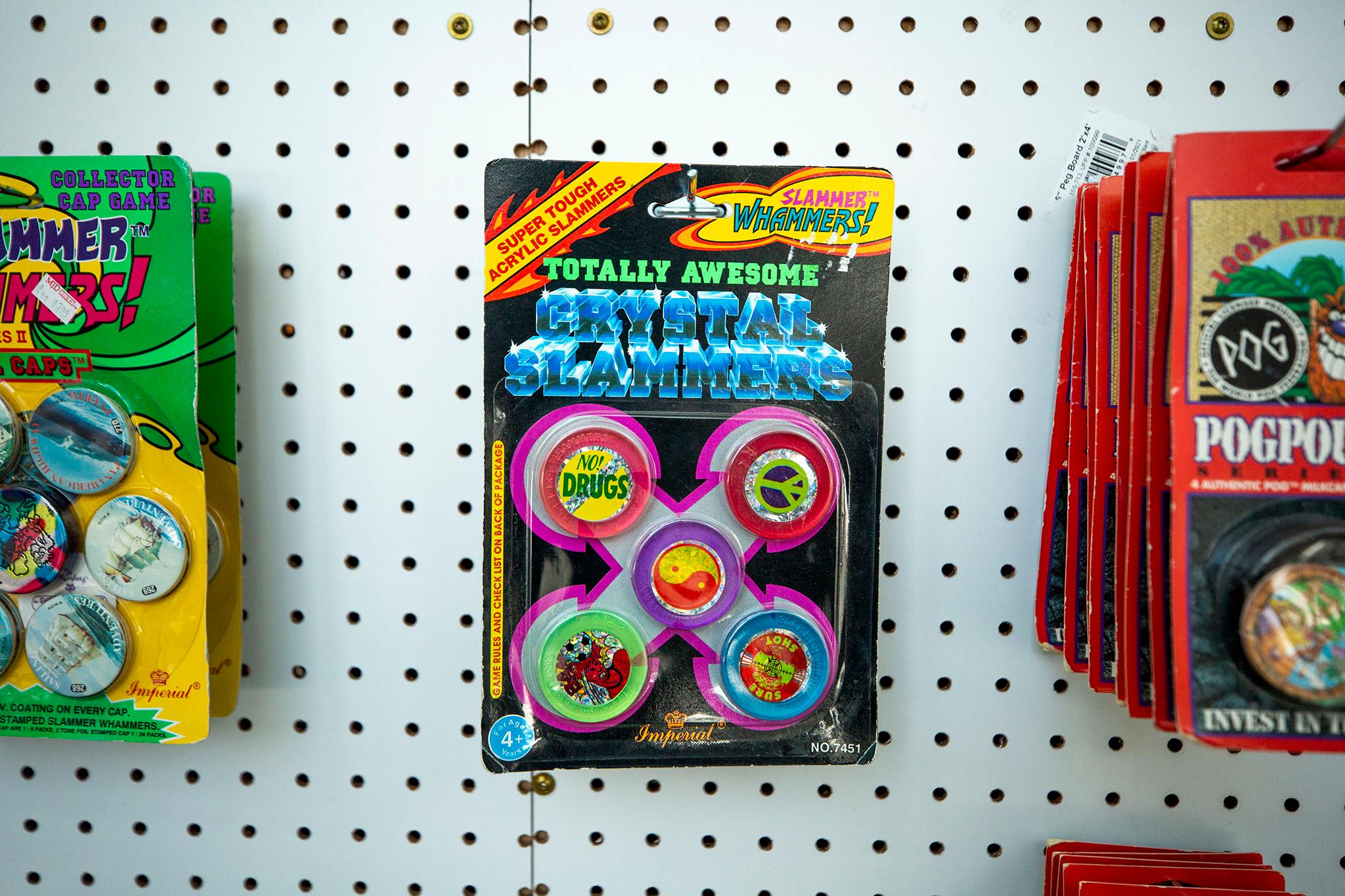
Reini liked how ridiculous the idea of a pog store was. He figured it might make an interesting art project that might complement and amplify his own pog paintings.
"It's absolutely absurd to the nth degree," he said. "This is something that I grew up with. It's something that had a lot of meaning for younger-me. So trying to look into it and seeing, like, the merit in this thing that disappeared, and then kind of like elevating it. And in that whole process of elevation, it just gets exponentially more ridiculous. It's more absurd. There's no real point to it....and especially with like last year like, nothing, nothing matters, nothing's real, everything can get turned on its head at any point in time."
He pitched Understudy, an art incubator based out the Colorado Convention Center that hosts rotating art exhibitions each month, on the idea of a Pog Store: a temporary immersive art exhibition dedicated to the '90s craze, as well as a literal store where people could buy pogs and pog accessories.
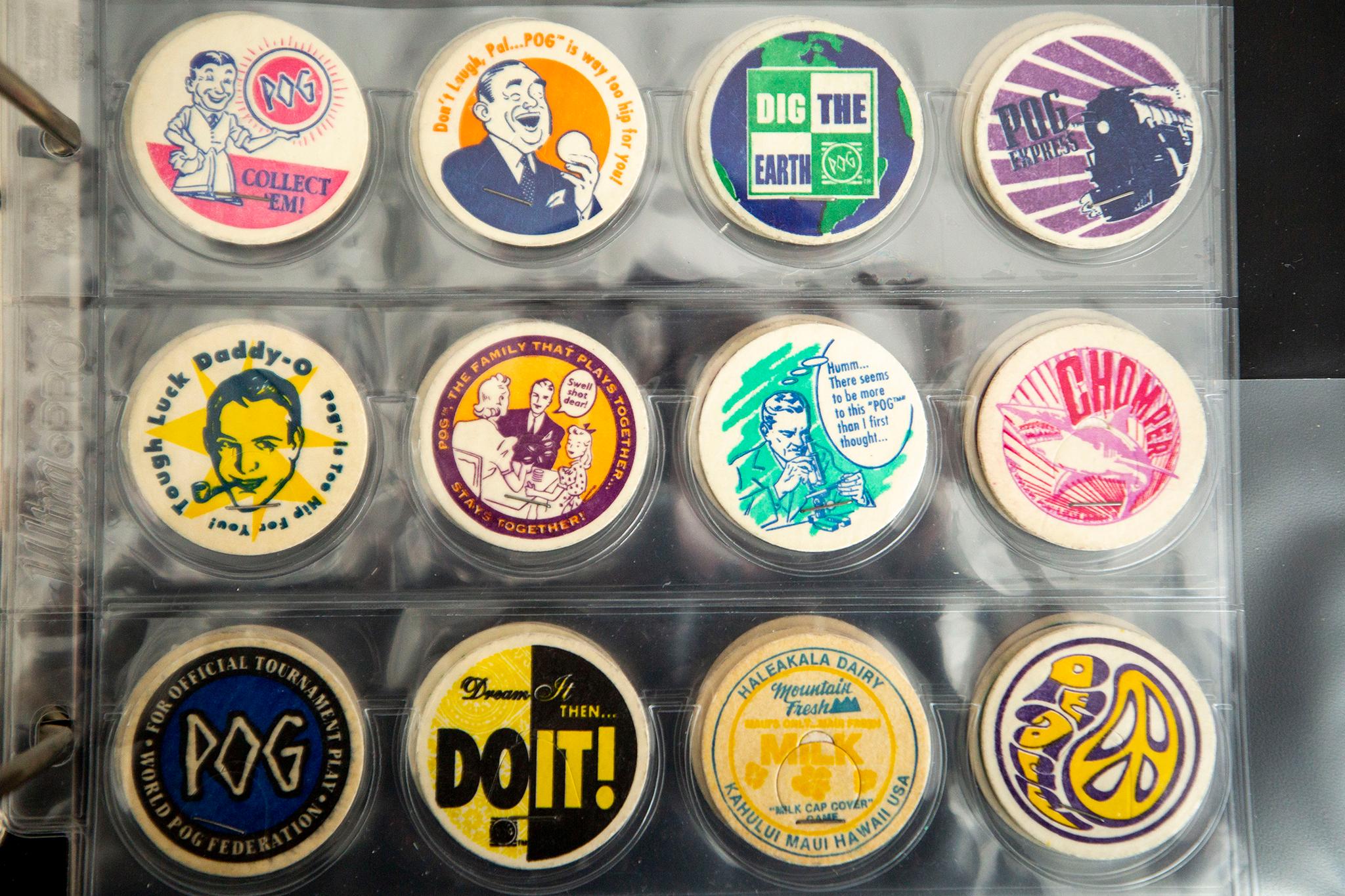
Thadeaous Mighell, the Director of Arts and Programming at Understudy, grew up playing pogs.
"Personally, they appeal to me because, like, I was right at the age to be a part of the pog hype," he said. "I played the game a little bit, but I collected more. And I remember in school, they stopped allowing us to play because kids would get upset when their pogs would get taken. And then they would tell the teacher or their parents, and you'd have to return them, which kind of defeats the point of the game. So it was like one of those things that you're not allowed to do at school, which may have, I guess, made it live a little bit longer than it probably should have."
Beyond pogs' nostalgic appeal, Mighell found it interesting that Reini decided to create an entire art exhibit out of a fad that had already passed.
"Art theory-wise, I just think it's really interesting that Zach chose to basically invest in a business that is destined to fail," Mighell said. "Which is kind of a dark commentary on the art world and consumerism in general."
Mighell said it's somewhat absurdist, or Dada, almost an anti-art movement, to say that these trend items can be elevated to the level of art.
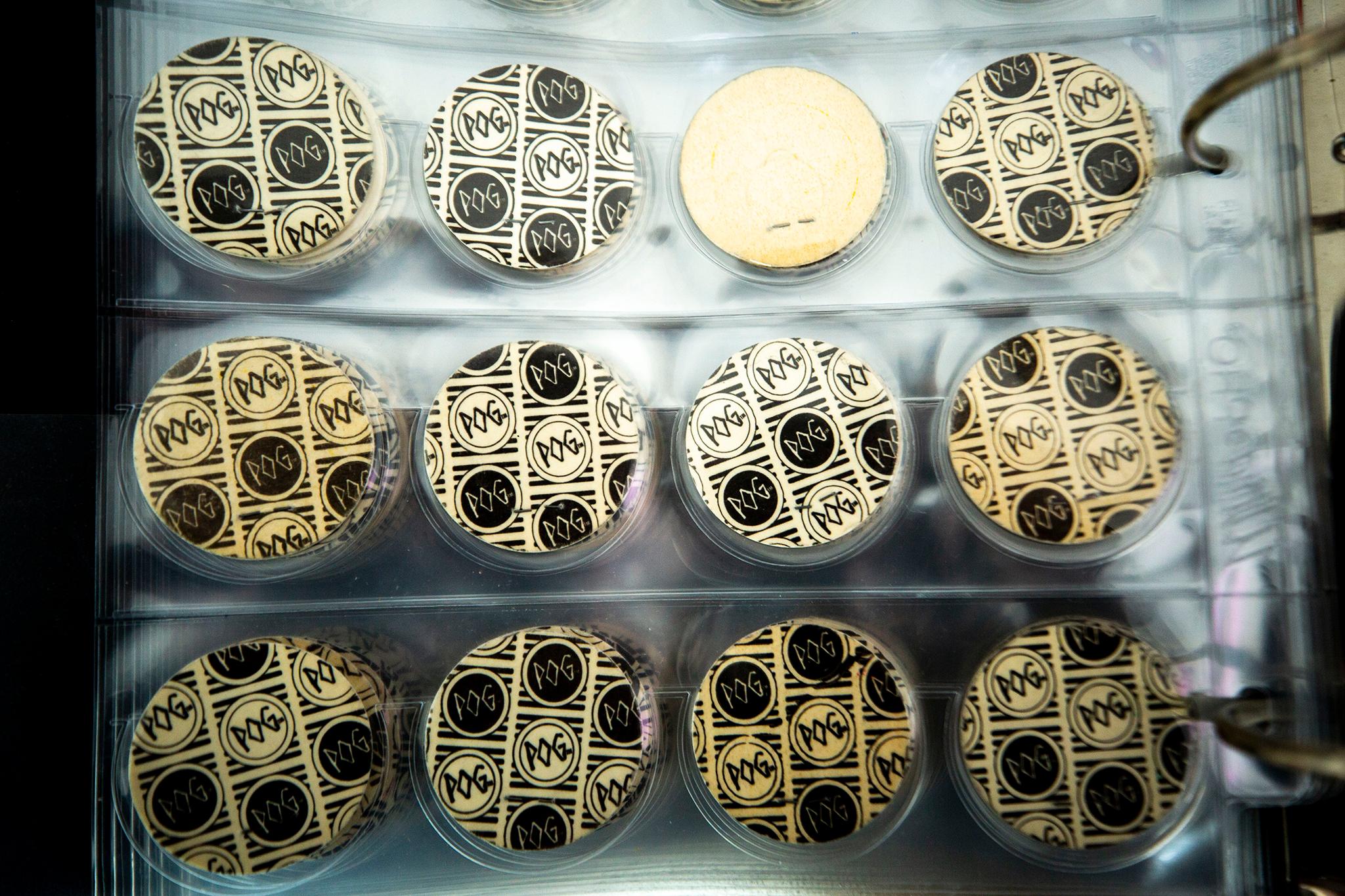
Understudy gave Reini the green light. He bid on the pog archive and won ("Probably because, like, who is stupid enough to make a pog store in today's day and age?" he said) and they made plans to open the store in November 2020.
When COVID-19 hit last March, Understudy was forced to close to visitors. For the last year, Understudy has only been able to operate as a "fishbowl" exhibition, wherein visitors could view the art through a window from outside. All of the installations slated on the original 2020 roster were postponed, and the Pog Store was put on hold.
But the pogs had already arrived, enough of them to fill four or five big storage tubs from home depot, plus three smaller ones. For the pogs, COVID meant one more year of obscurity, one more year of sitting in someone's basement.
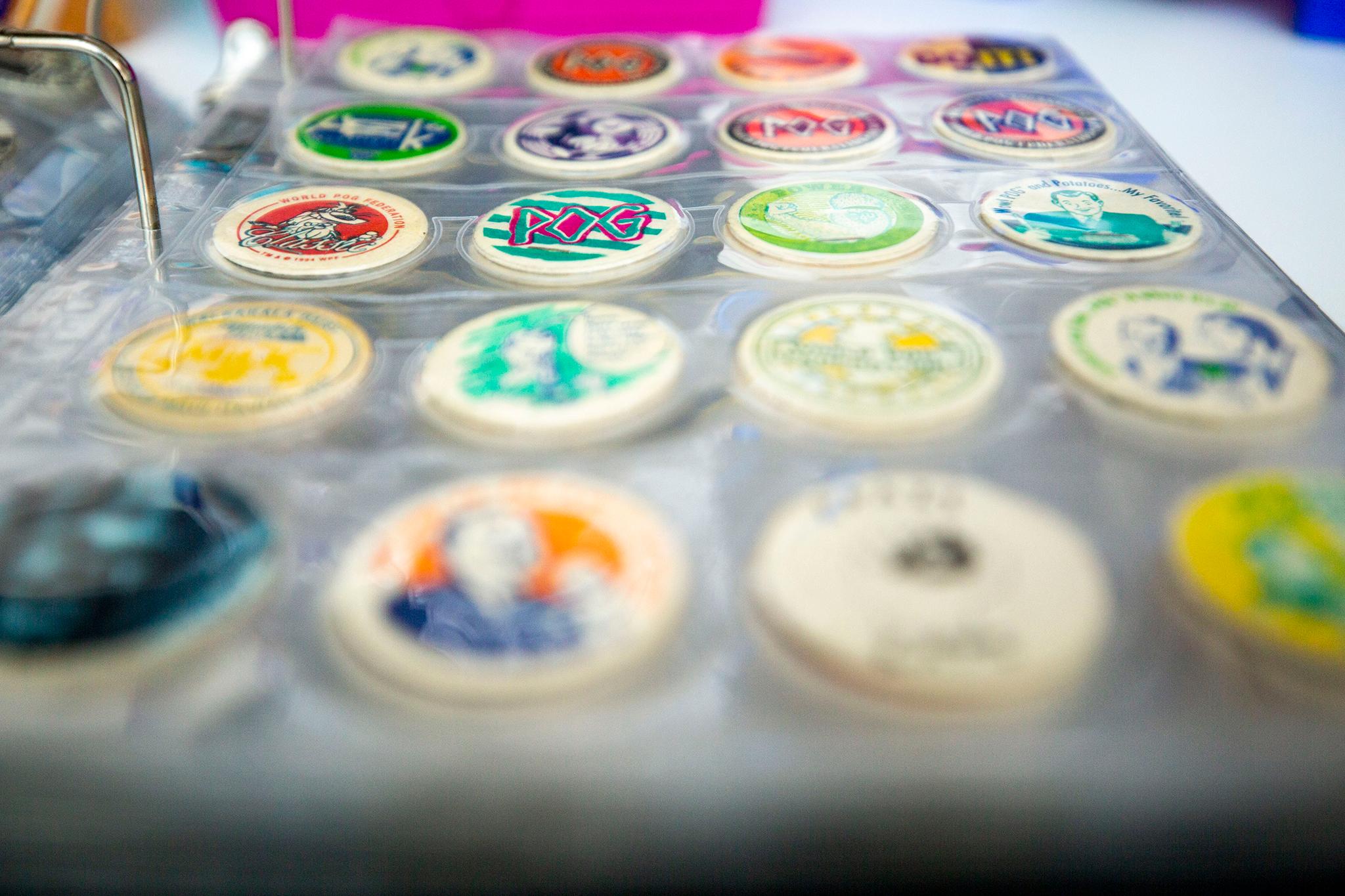
Now that the Colorado Convention Center is set to reopen and is starting to plan events, Understudy is following guidance about how to do the same safely, starting with the Pog Store.
"We're really excited to be back and that we survived, and just happy to have people in the space again," Mighell said.
The Pog Store will be Understudy's first in-person installation in over a year. It was selected, Mighell said, mainly because it was next in line on the original roster of cancelled 2020 exhibitions. But another factor is that Reini had a whole store's worth of pogs taking up space in his basement.
The store was originally designed without COVID in mind. In an early iteration, Understudy would've hosted pog tournaments out of the store. It has since had to adapt it for social distancing requirements. Understudy plans to have temperature checks, hand sanitizing stations, signage about social distancing, one-way traffic flows and a mask requirement. Capacity will be capped at under 50% and regulated through timed entry and online reservations made through Eventbrite.
"But the nature of Pogs is that you kind of want to touch them," Mighell said. "We put them in books that have sheet protectors, so they're a lot easier to sanitize, as opposed to if somebody was flipping through individual pogs."
While attendance is free, everything in the store is for sale: pogs, slammers, storage tubes, playmats, shirts and other merch. But how do you price something that's been defunct for almost 30 years?
Reini said that most of the items in the store came to him with price stickers from the '90s. Reini took those prices and adjusted for inflation. A pog that cost 2.99 in '94, he said, costs maybe $5 or $6 now.
But not all pogs are equal. Reini set up a glass display where he keeps the "good stuff," including an OJ Simpson slammer, which depicts Simpson in a jail cell and reads "OJ in the slammer." On the back of the slammer, there's an image of the car chase leading to Simpson's arrest.
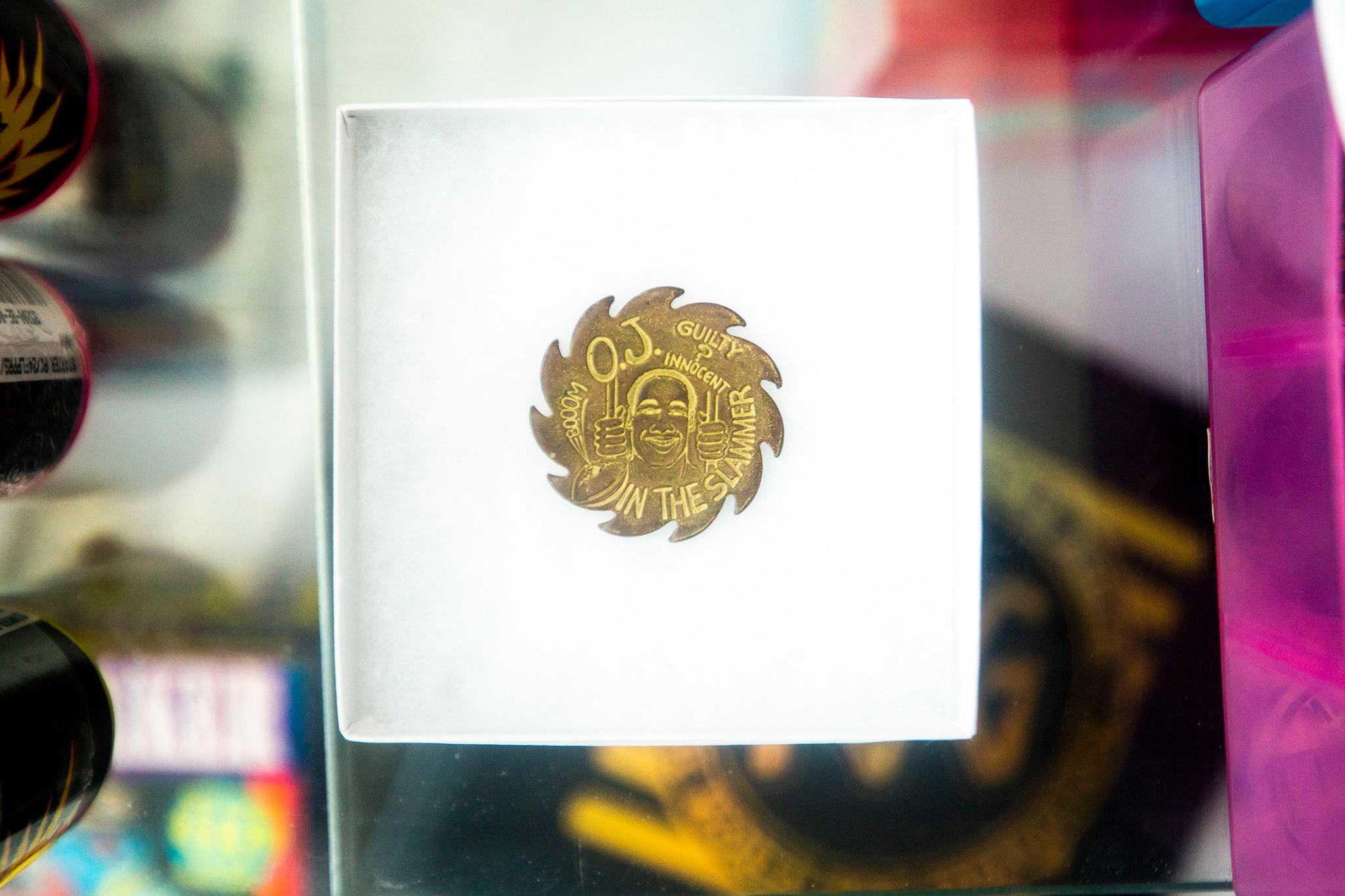
"It's as insane as it sounds, if not more," Reini said. The OJ slammer will sell in the store for $100.
Mighell says the pog store is a sort of escapist vehicle -- a way to forget about everything bad that's happened this year and just think about the '90s.
"I feel like people always want to relive their youth. Because, looking back on things, they always seem simpler, more fun, more vibrant and easier," he said. "And right now, because we've experienced such a hard year, people are especially craving that."
Reini said that what happened with pogs -- a quick rise in popularity followed by a quick drop to irrelevance -- is somewhat representative of the human experience, only on a more absurd, hyperbolic scale.
"Like, we've made meaning out of this totally useless thing, and then we move on to the next thing. So it just seems like a really human thing," he said. Each new thing displaces the one before it.
"We're very insignificant in the grand scheme of things. So it's sort of like a commentary on all of that. But in a really light hearted and funny way."
The Pog Store will be open to guests for the month of April, and admission is free. You can reserve a spot on Eventbrite.
